Dec 12, 1998
An example of the use of SkiP
The Ames Room
The Ames room is built using perspective cues to fool the eye of the
observer. The illusion best works when the viewer positions his/her
head near the Camera Station planned in the design of the illusion. It
is a good example to test our algorithm and verify that we do
reconstruct the 3D illusory model, as the brain does ...
Due to the assumed perspective, the observer "builds" a
cubical room, while the real room is physically made with a tilted
back-wall (and a trapezoidal distorted checkerboard, which looks like a
normal squared checkerboard when viewed near the CS locus). Thus, in
the example here, the boy on the RHS looks like a pygmy in comparison
to his "giant sister" on the LHS (in reality, she is much
closer to the CS/us than the perspective cues let us assume).
The following images illustrate the 3 steps used in SkiP to:
-
Retrieve camera parameters from perspective cues (phase 1a) and specify
a reference frame and metric length (phase 1b).
-
Initialize 3D reconstruction and verify/adjust camera parameters (how
good a fit do we observe) - phase 2.
-
Pursue 3D reconstruction with fixed camera parameters - phase 3.
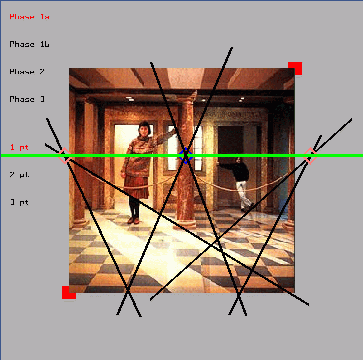 |
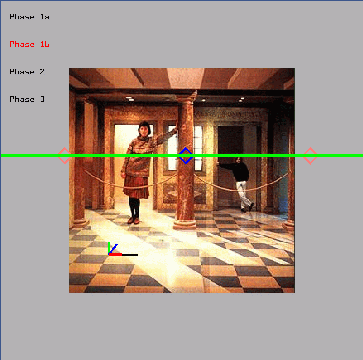 |
Phase 1a: retrieve perspective cues for 1PtP
|
Phase 1b: Position reference frame and input metric.
|
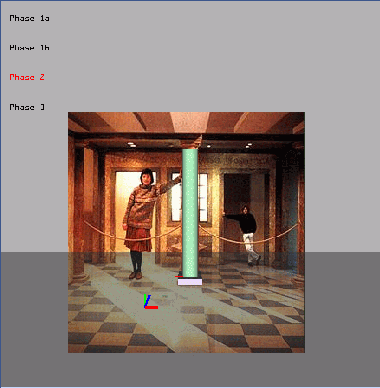 |
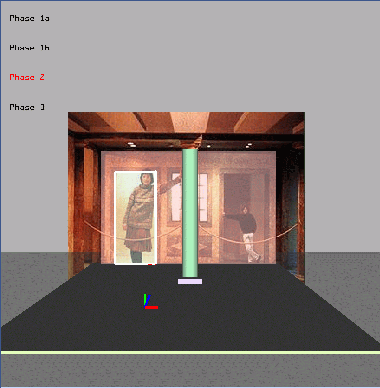 |
| Phase 2: Built the central column. |
Phase 2: Added a floor, back-wall & door. |
Camera parameters look fine: proceed to phase 3 (freeze the camera
calibration for the CS).
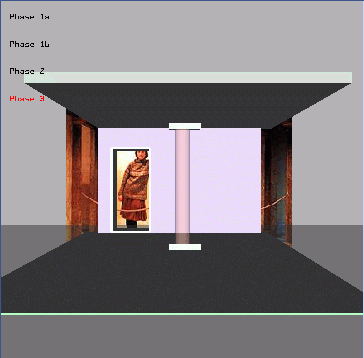 |
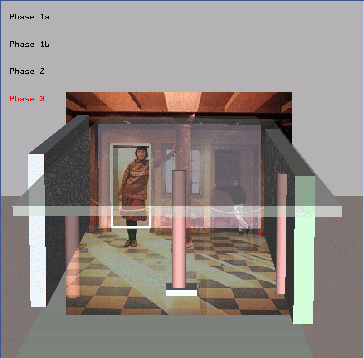 |
| Phase 3: Added a ceiling, built the door (CSG). |
Phase 3: More columns, walls; roam around. |
Page created & maintained by Frederic Leymarie, 1998.
Comments, suggestions, etc., mail to: leymarie@lems.brown.edu





